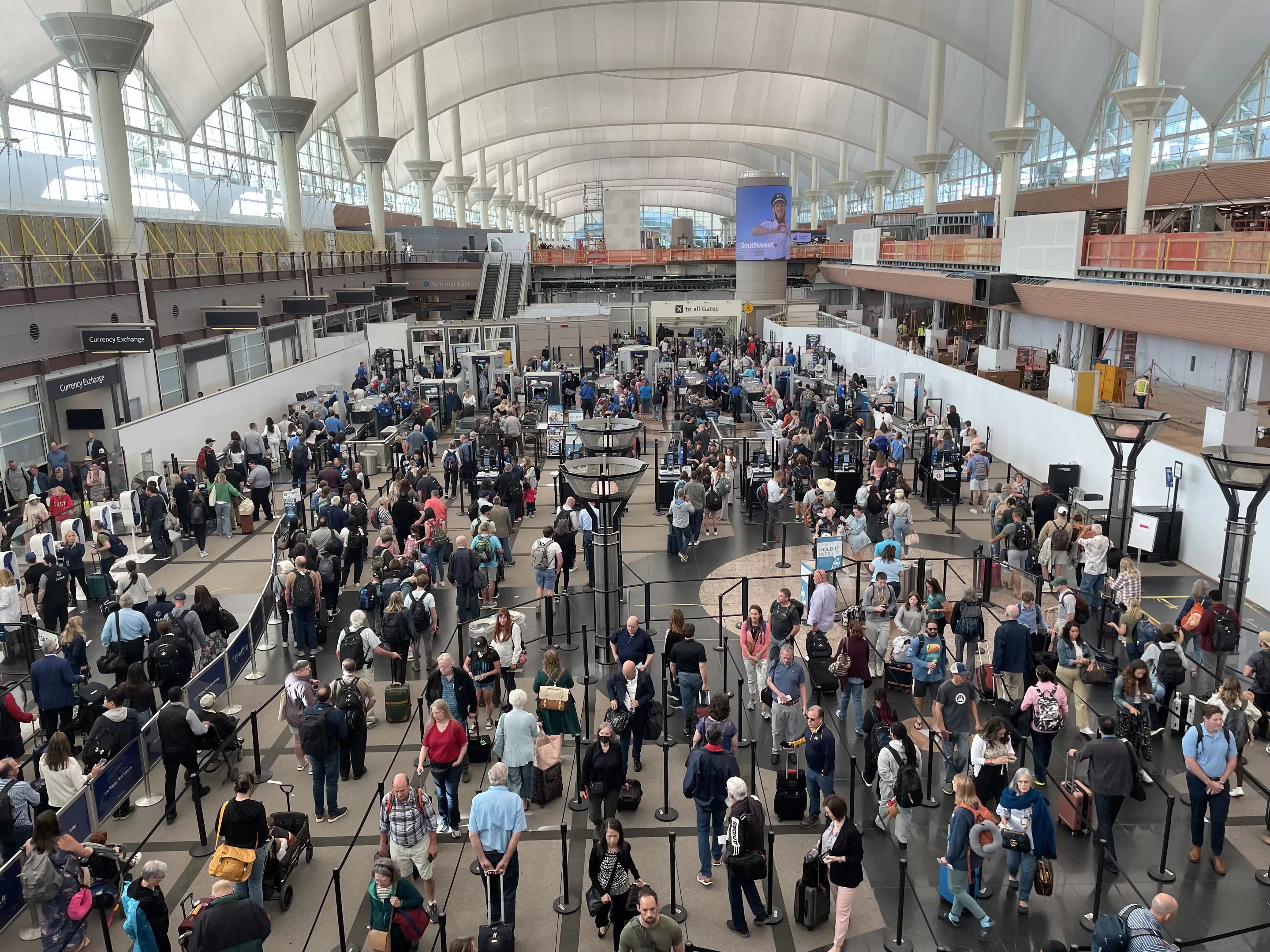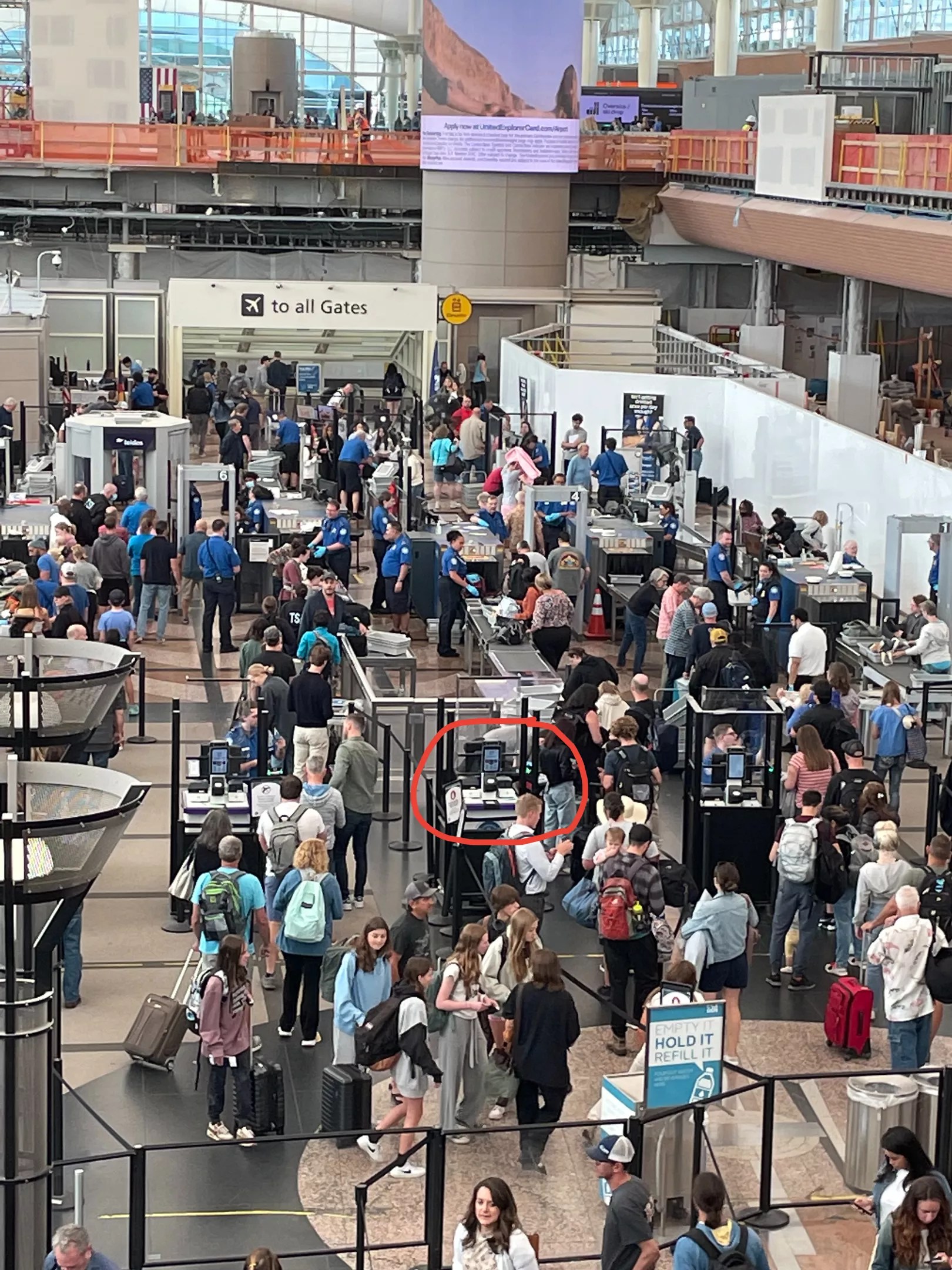
Catie Cheshire

Audio By Carbonatix
It’s officially summer travel season, and those making their way to Denver International Airport may want to make sure they’re camera-ready if they plan to go through the North Security Checkpoint.
In November 2022, the Transportation Security Administration began implementing new Credential Authentication Technology – dubbed CAT-2 – that uses facial recognition technology to match live photos taken at TSA checkpoints with the identification cards provided by travelers.
The TSA has added five CAT-2 units to North Security to test a new facial recognition system. It already has 21 first-generation CAT units across its three Denver checkpoints that assist with credentialing. It is also testing CAT-2s in fifteen other airports.
With the CAT-2, passengers no longer need to present boarding passes: The machines are designed to confirm flight details along with identities.
Denver, make your New Year’s Resolution Count!
We’re $17,500 away from our End-of-Year campaign goal, with just a five days left! We’re ready to deliver — but we need the resources to do it right. If Westword matters to you, please contribute today to help us expand our current events coverage when it’s needed most.
“TSA is conducting biometric operational assessments at 16 domestic airports to study the potential for significant enhancement in identity verification, improved checkpoint efficiency and to provide passengers with a better checkpoint experience,” TSA spokesperson Lorie Dankers says in an email.
Instead of TSA officers verifying photos, CAT-2 does it for them.
Currently, the TSA is mainly rolling out CAT-2 at checkpoints that service those with TSA PreCheck, which is the case at North Security at DIA.
Morgan Klaus Scheuerman – a post-doctoral associate in information science at the University of Colorado Boulder – has studied how identity is represented in computer vision technologies like facial recognition and its implications for marginalized groups. He says the government has the idea that such technology could make work less onerous for its employees by streamlining some processes, as is the case with CAT-2.
On the flip side, others are concerned about potential privacy breaches and the bias that can sometimes be built into the technology.

In this photo illustration, the TSA’s new facial recognition tech is circled in red.
Catie Cheshire
“People have different opinions about facial recognition,” Scheuerman says. “Some want it to work better for all groups and improve accuracy for all groups [and] some people are highly against its use.”
Scheuerman notes that there are a few points to consider with facial recognition at DIA. First, research has shown that people with darker skin tones are often trickier to recognize through the technology because systems are sometimes trained on samples that mainly include lighter-skinned people.
In addition, if a person’s appearance has changed from their identification photos – maybe they’re transgender and transitioning or have simply dyed their hair or styled it differently – they could run into problems with facial recognition technology.
“The major issue there is then the onus kind of gets put on the person who’s having problems with the system to prove they are who they say they are,” Scheuerman says. “It could result in very negative, or humiliating, or dignitary harms for people who have to interact with TSA after the fact.”
Facial recognition is based on the idea that there is something static about people’s underlying facial structure that won’t change over time. But that’s not always the case, Scheuerman points out.
Part of the TSA’s testing, he says, should be figuring out a protocol for when facial recognition doesn’t work for certain people – especially since many of them are likely to be part of marginalized groups.
“It should be optimizing for when the algorithm fails,” Scheuerman adds. “How do we handle this appropriately and respectfully?”
Currently, people can opt out of the facial recognition technology at TSA checkpoints; participation is completely voluntary. However, Scheuerman says, it could eventually become the norm.
The TSA assures people that the photos it captures aren’t stored or used for anything except immediate identity verification. It will continue to evaluate the use of biometric and digital identity technology to keep up with cutting-edge developments.
But for now, Denver travelers can enjoy being guinea pigs…or opt out if they’re not ready for that close-up.